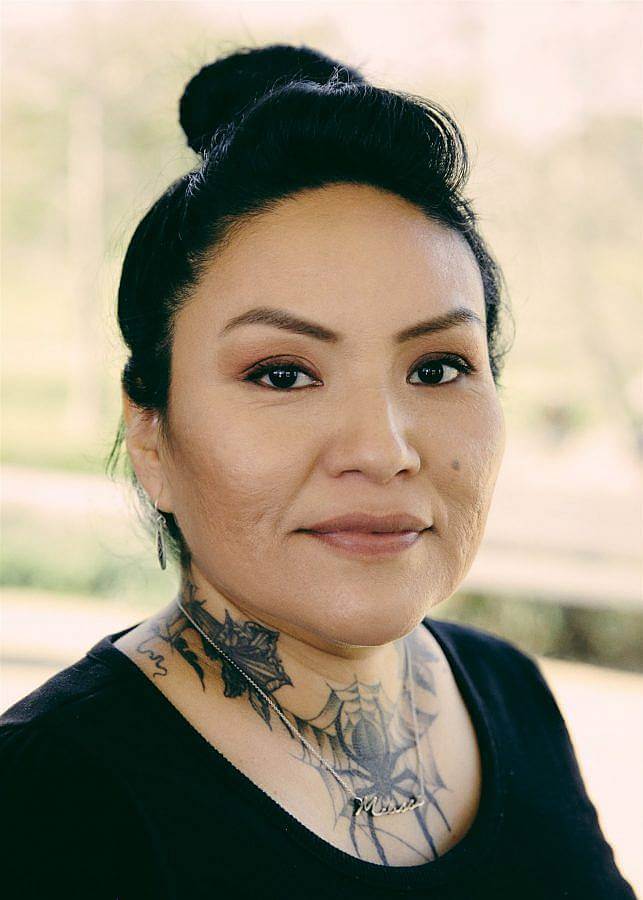Tell us a little bit about yourself and what you do.
I am a 4th generation textile artist. I work in the Germantown revival style of Navajo weaving. I weave large-scale wall tapestries on a traditional Vertical loom using traditional methods and techniques that have been passed down through my ancestors.
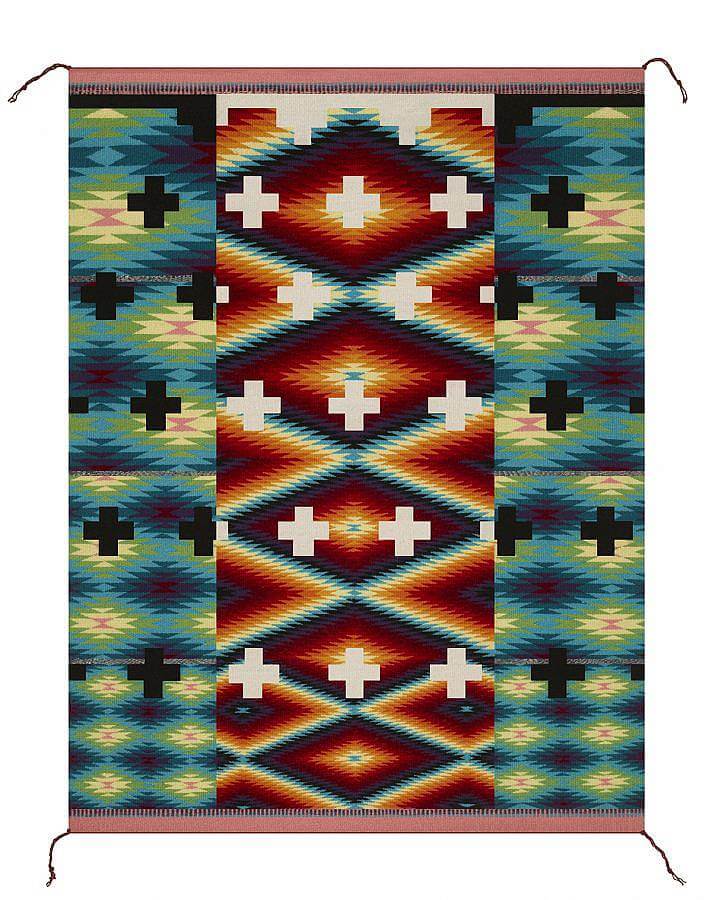
What are the main motifs in your work?
I work in highly detailed geometric patterns that are based on traditional regional patterning and inspirations of reservation landscapes and cultural stories. My work is also inspired by contemporary themes and my personal narrative in Long Beach, CA.
What were some of your favorite stories growing up?
Coming from a large family, spending time with my extended family there was always weaving no matter where I went. The time I spent with my family on the range and the ranches, having a connection to the land and animals (specifically the sheep), I got a lot of teachings from elders when it came to weaving. I spent a lot of time in museums because my mom and aunts were also weavers, I was exposed to a lot of mediums of art that opened up my eyes at an early age to a lot of creative energy. I got an opportunity to see the vast variety of art processes and this made me think broader about the possibilities for myself as an artist off the reservation.
Who or what has been the biggest creative influence on your work?
My mom, my grandma, and my aunt Mary-Lou. My mom is the biggest inspiration because she taught me how to weave, she instilled that foundational knowledge on the processes and techniques. She helped me refine my practice and helped me understand the pride that comes with the work I make. My grandma Martha Gorman-Schultz, she is just not the foundational wisdom, she is the reflection of my ancestors who made it possible for us to have this type of work. She is multigenerational knowledge, so to see her weaving in her 90’s, that inspires me to continue weaving and pass that on to my own children. Even in her 90’s her work is evolving, and she continues to push herself to create work that is inspiring to her and her creative sensibilities. My Aunt Mary is trailblazer, she is innovative and has been throughout her career as an artist. She is continually pushing herself to expand her technical knowledge, she creatively pushes herself, making work that is future based and non-typical. She integrates technical advances but also travels the world to explore the possibilities of weaving globally.
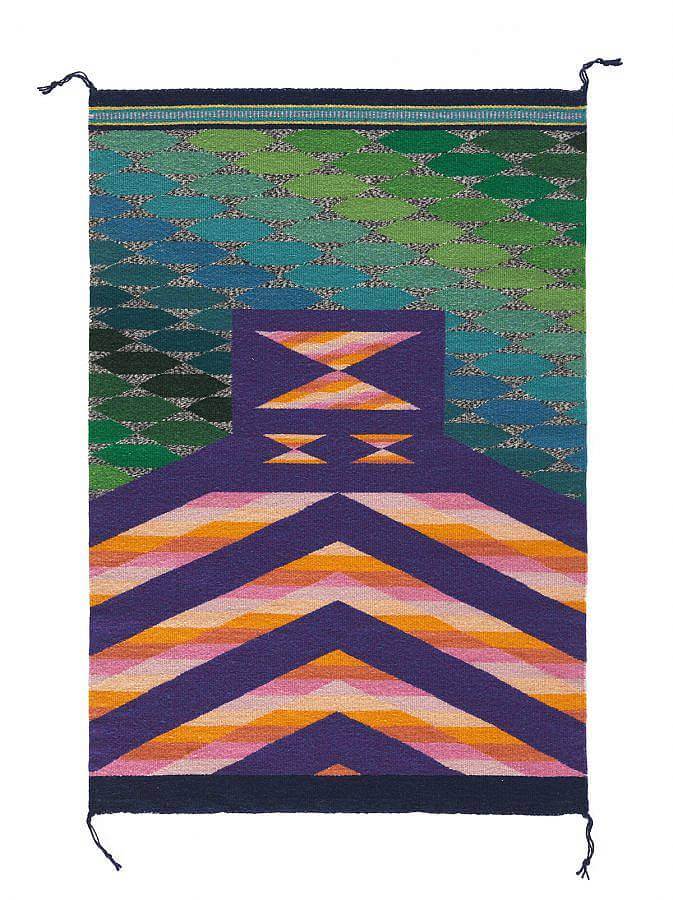
Are there any recent, upcoming or current projects you are working on and excited about?
I am currently in the Made in LA show, at the Hammer Museum in LA. I am also part of the The Land Carries Us show at the National Gallery of Art. I also have my first solo exhibition at the Museo de Arte São Paulo, in São Paulo Brazil titled Under Webbed Skies. This show will later travel to PS1 MOMA in NYC in April 2024.
What has been your proudest moment as an artist?
Having my first international show at MASP that has an accompanying book.
What do you want a viewer to walk away with after seeing your work?
I want them to be inspired and to walk away with a heightened appreciation for fiber arts.
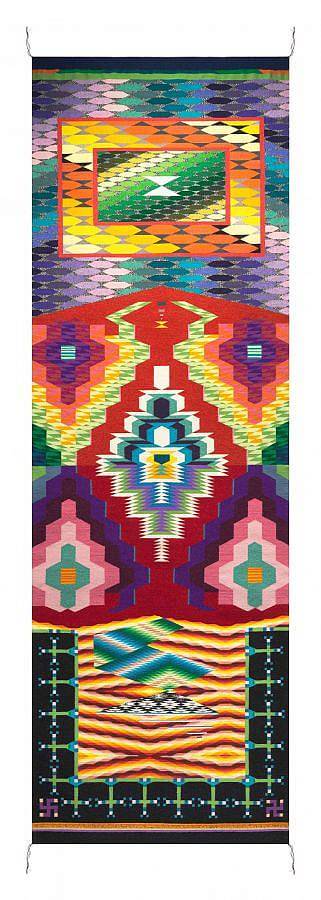
What have been your biggest obstacles in developing your artistic voice and how have you overcome them?
I’ve had a pretty focused path when it comes to textiles because I’ve been an artist since I was 5, it’s been a real thing and part of my daily life. My work is very autobiographical, I can look at any of my textiles and match it to a specific point in my life. I think the only obstacle I’ve had has been physical space when it comes to working. I’ve never had a large working studio for my artistic process, till I came to Long Beach. I now have the space and materials to make the large-scale work that I have always wanted to make.
Do you have any daily rituals?
I’m a mother, so all of my rituals revolve around my kids, and they are all set up for the day before my day starts. My kids are with me every day at the studio, so the schedule also shifts every day.
Where do you feel the most seen and comfortable to express yourself?
Around my community, whether it be my family or friends or other artists in general. There is a certain comradery that certain artists have with each other and it’s especially present with Indigenous artists in the LA area.
What are some ideas that have served you well in the past, but are no longer useful to you?
Thinking small. Thinking big past the physicality of my work, but what bigger stages my work can be shown. That my work can invite bigger opportunities and also obtainable to a larger audience. Still accommodating my roots as an Indigenous artist, but branching out larger markets and experiences.
How does your background as a member of the Navajo Nation inform how you navigate the world both culturally and artistically?
My weaving practice is an everyday constant in my life, so cultural and artistic influences are always going to be present. My art is rooted in the cultural, and traditional stories and motifs of my tribe, so it’s always there.
How has your work transformed throughout the span of your career?
Early in my career I learned a lot from my peers who were also weavers, but also my elders who were weaving imparted a lot of wisdom on me. I can now experiment and take my work to many stages. I grew through the ranks of learning the traditional styles and techniques of Navajo weaving, and I perfected those, making a lot of my own design work. Currently, there are no limitations on my work.
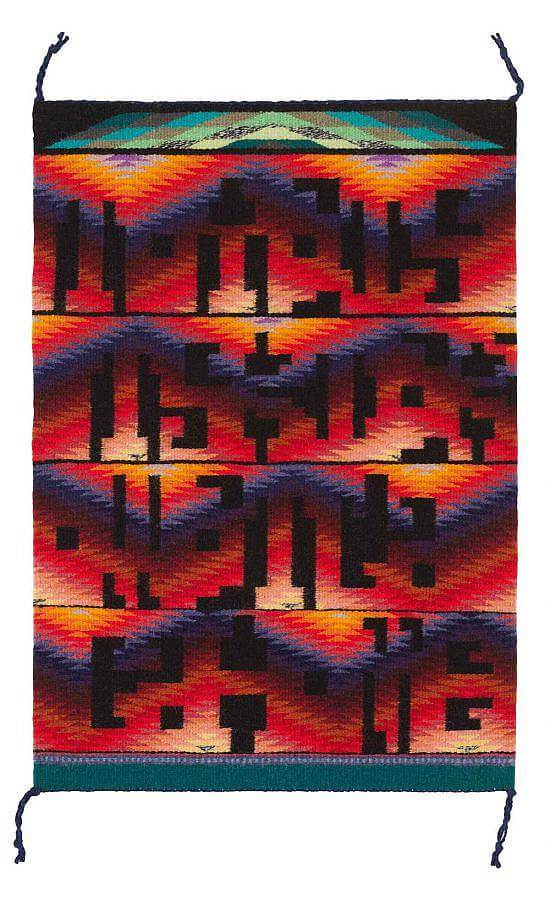
Interview composed and edited by Wonu Balogun
